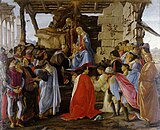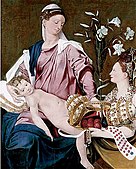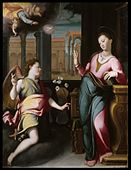- Annunciation, by Plautilla Nelli
- The Medici Madonna, by Benedetto Pagni
- The Annunciation, by Santi di Tito
Related Research Articles
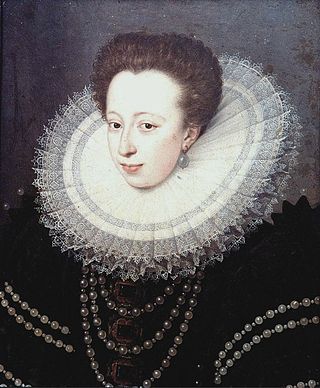
Christina of Lorraine was a French noblewoman of the House of Lorraine who became a Grand Duchess of Tuscany by marriage. She served as Regent of Tuscany jointly with her daughter-in-law during the minority of her grandson from 1621 to 1628.


Francesco I was the second Grand Duke of Tuscany, ruling from 1574 until his death in 1587. He was a member of the House of Medici.
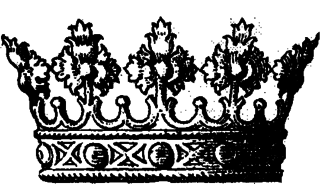
The Duca della Repubblica Fiorentina, rendered in English as Duke of the Florentine Republic or Duke of the Republic of Florence, was a title created in 1532 by Pope Clement VII for the Medici family, which ruled the Republic of Florence. There were effectively only two dukes of the Republic of Florence, Alessandro de' Medici and Cosimo de' Medici, the second duke being elevated to Grand Duke of Tuscany, causing the Florentine title to become subordinate to the greater Tuscan title.

Virginia de' Medici was an Italian princess, a member of the House of Medici and by marriage Duchess of Modena and Reggio.
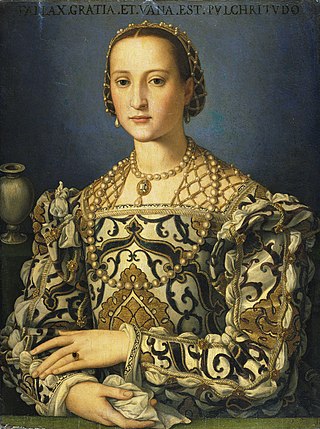
Eleanor of Toledo, born Doña Leonor Álvarez de Toledo y Pimentel-Osorio, was a Spanish noblewoman and Duchess of Florence as the first wife of Cosimo I de' Medici. A keen businesswoman, she financed many of her husband's political campaigns and important buildings like the Pitti Palace. She ruled as regent of Florence during his frequent absences: Eleanor ruled during Cosimo's military campaigns in Genoa in 1541 and 1543, his illness from 1544 to 1545, and again at times when the war for the conquest of Siena (1551–1554). She founded many Jesuit churches. She is credited with being the first modern first lady or consort.

Bianca Cappello was an Italian noblewoman, the Grand Duchess consort of Tuscany by marriage to Francesco I de' Medici, Grand Duke of Tuscany. She and Francesco had a relationship and she was his mistress before they married and she became his consort. Coincidentally, the creation of the fortunate term serendipity by the writer Horace Walpole is due to a portrait of Bianca.

Joanna of Austria was an Archduchess of Austria. By marriage to Francesco I de' Medici, she was the Grand Princess of Tuscany and later the Grand Duchess of Tuscany. One of her daughters was Marie de' Medici, second wife of King Henry IV of France.

Vittoria della Rovere was Grand Duchess of Tuscany as the wife of Grand Duke Ferdinando II. She had four children with her husband, two of whom would survive infancy: the future Cosimo III, Tuscany's longest-reigning monarch, and Francesco Maria, a prince of the Church. At the death of her grandfather Francesco Maria della Rovere, she inherited the Duchies of Rovere and Montefeltro, which reverted to her second son, Francesco Maria, at her death. She was later entrusted with the care of her three grandchildren. Her marriage brought a wealth of treasures to the House of Medici, which can today be seen in the Palazzo Pitti and the Uffizi Gallery in Florence.

Lucrezia de' Medici was a member of the House of Medici and by marriage Duchess consort of Ferrara, Modena and Reggio from 1558 to 1561.

Medici porcelain was the first successful attempt in Europe to make imitations of Chinese porcelain, though it was soft-paste porcelain rather than the hard-paste made in Asia. The experimental manufactory housed in the Casino of San Marco in Florence existed between 1575 and 1587 under the patronage of Francesco I de' Medici, Grand Duke of Tuscany. Surviving examples are extremely rare, numbering 59 according to the Metropolitan Museum of Art.
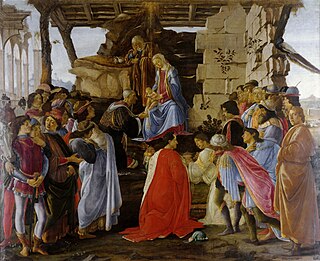
The Adoration of the Magi is a painting by the Italian Renaissance master Sandro Botticelli. Botticelli painted this piece for the altar in Gaspare di Zanobi del Lama's chapel in Santa Maria Novella around 1475. This painting depicts the Biblical story of the Three Magi following a star to find the newborn Jesus. The image of the altarpiece centers on the Virgin Mary and the newborn Jesus, with Saint Joseph behind them. Before them are the three kings who are described in the New Testament story of the Adoration of the Magi. The three kings worship the Christ Child and present him with gifts of gold, frankincense and myrrh. In addition, the Holy Family is surrounded by a group of people who came to see the child who was said to be the son of God.

Don Antonio de' Medici was the only son of Francesco I de' Medici, Grand Duke of Tuscany and his mistress Bianca Cappello. He was a minor figure at the Grand Ducal Medici court.
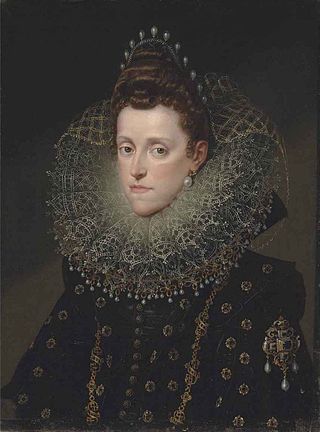
Eleanor de' Medici was a Duchess of Mantua by marriage to Vincenzo I Gonzaga. She served as regent of Mantua 1595, 1597 and 1601, when Vincenzo served in the Austrian campaign in Hungary, and in 1602, when he left for Flanders for medical treatment. She was a daughter of Francesco I de' Medici and Joanna of Austria and the sister of Marie de' Medici, Queen of France.

Eleonora di Garzia di Toledo or Leonor Álvarez de Toledo Osorio, more often known as "Leonora" or "Dianora", was the daughter of García Álvarez de Toledo, 4th Marquis of Villafranca, Duke of Fernandina. Leonora was born in Florence, where she was brought up by Cosimo I de' Medici, Grand Duke of Tuscany and his wife Eleanor of Toledo, her aunt and namesake. Betrothed to their son Pietro at the age of 15, she blossomed under the wing of Pietro's older sister, the artistic patron Isabella, into a vivacious and witty beauty. Her marriage, like Isabella's, was not a success, and she followed her mentor's example of taking lovers. For this reason, Pietro had her brought in 1576 to the country retreat of Cafaggiolo, where he strangled her to death with a dog leash. Cosimo's successor, Francesco I, tacitly approved the murder, and Pietro was never brought to justice for it.

The Pucci family has been a prominent noble family in Florence over the course of many centuries. A recent notable member of this family was Emilio Pucci, an Italian fashion designer who founded a clothing company after World War II.
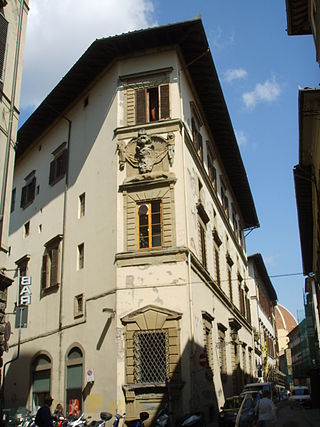
The Palazzo Mondragone, also known as Palazzo Mandragone, Ambron(n), Ricasoli di Meleto, or Peyron, is a palace located on Via del Giglio #4r-8r in central Florence, region of Tuscany Italy.
Niccolò Gaddi was an Italian nobleman and art collector

Joseph Goedenhuyze or Goedenhuize was a Flemish botanist and naturalist, active in the court of the Grand Duchy of Tuscany. He was also known by the Italian name Giuseppe Casabona or more rarely Giuseppe Benincasa
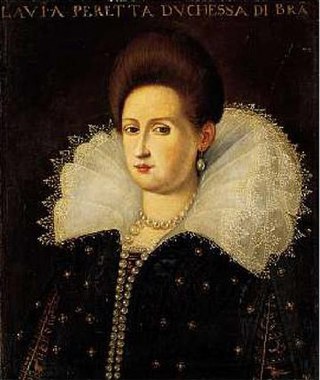
Flavia Damasceni Peretti, Duchess of Bracciano was an Italian noblewoman, niece of Pope Sixtus V and duchess consort of Bracciano as wife of Virginio Orsini. She is also known as the patroness of several poets, writers and musicians.
References
- ↑ Garaia, D. "Genealogías del Alto Deba". Leinztarra. Retrieved 24 May 2017.
- 1 2 3 4 5 6 Trabalzini, Luca (December 31, 2014). "Il Marchese di Mondragone alla corte di Francesco I de'Medici". La Rivista della Scuola. I (4): 18–19.
- ↑ Pagni, Lorenzo di Andrea. "Letter to Riccio, Pier Francesco (October 27, 1543)". The Medici Archive Project. Retrieved 24 May 2017.
- ↑ Bresnahan-Menning, Carol (September 1989). "Loans and Favors, Kin and Clients: Cosimo de'Medici and the Monte di Pieta". The Journal of Modern History. 61 (3): 504. JSTOR 1881348.
- 1 2 3 González Talavera, Blanca (2011). Presencia y Mecenazgo Español en la Florencia Medicea: de Cosme I a Fernando I. Universidad de Granada. p. 47.
- ↑ X. "Lista de la famiglia de la Illustrissima Signora Duchesa". The Medici Archive Project. Retrieved 24 May 2017.
- ↑ Pagni, Lorenzo di Andrea. "Letter to Riccio, Pier Francesco (September 4, 1544)". The Medici Archive Project. Retrieved 24 May 2017.
- ↑ Incontri, Giovani-Battista. "Letter to Riccio, Pier Francesco (February 2, 1549)". The Medici Archive Project. Retrieved 24 May 2017.
- ↑ de Ricci, Giuliano (1575). Cronaca. p. fol. 305v.
- ↑ Garçes, Gabriel. "Letter to Francesco I de' Medici". The Medici Archive Project. Retrieved 24 May 2017.
